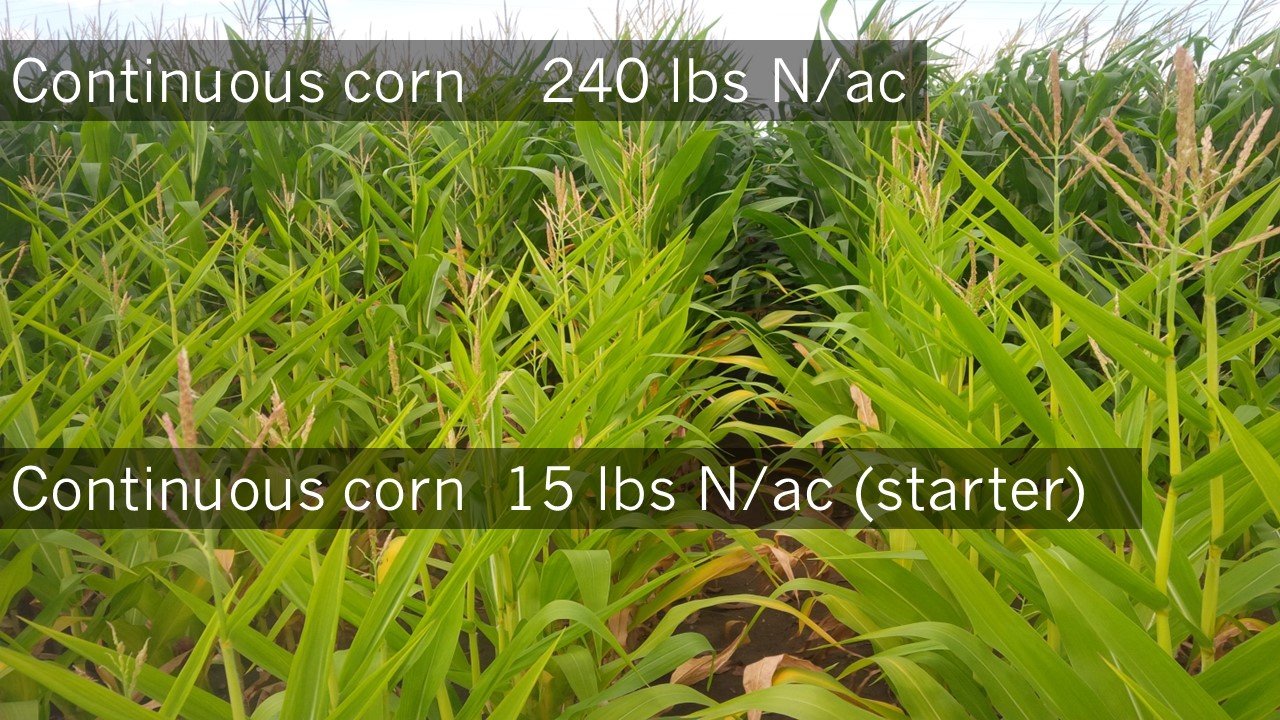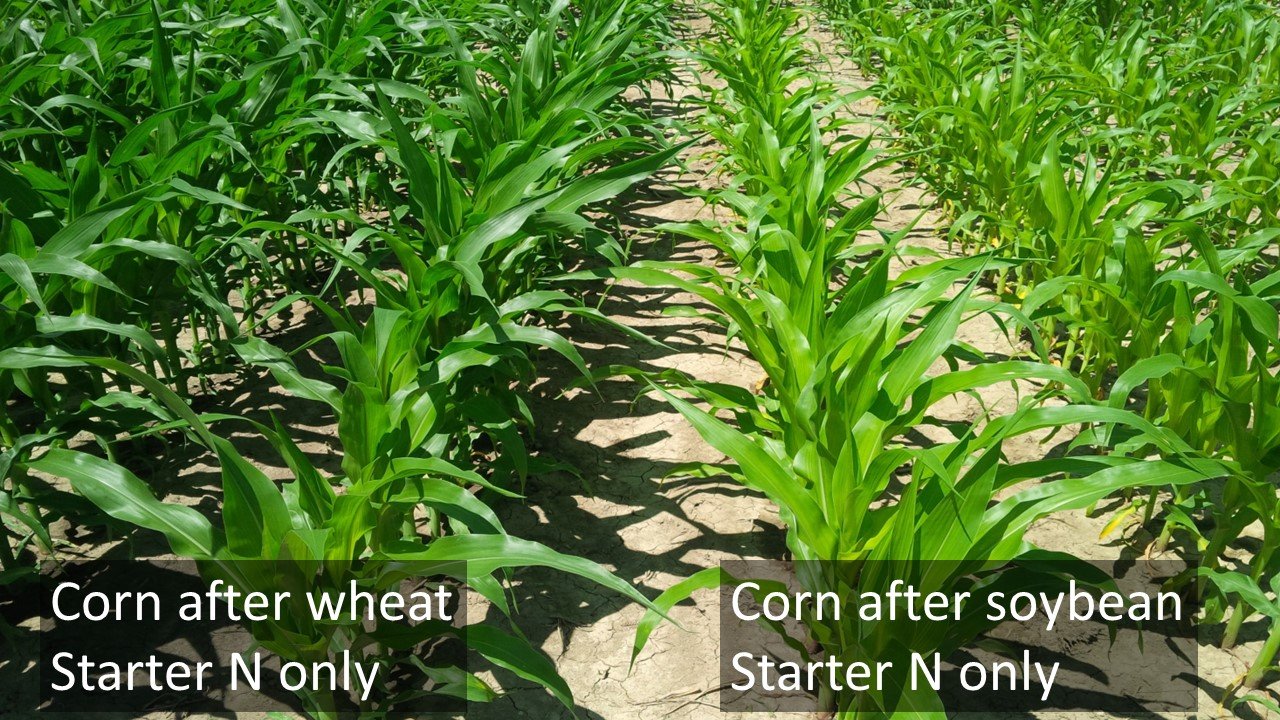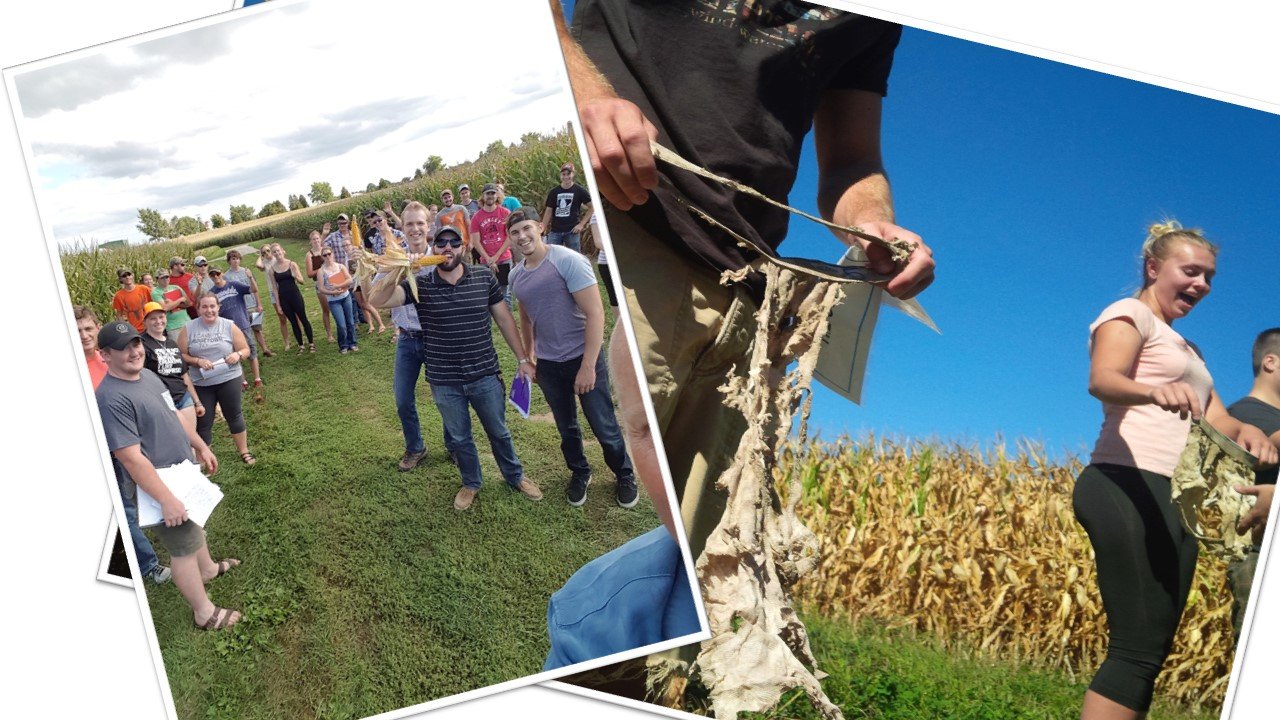Long-term Rotation and Tillage Trial
The Long-term Rotation and Tillage Trial was established in 1995. It is located at the Ontario Crops Research Centre in Ridgetown, Ontario, Canada which is owned by the Agricultural Research Institute of Ontario and managed by the University of Guelph through the Ontario Agri-Food Innovation Alliance. The objective of the trial is to study the long-term, interactive effects of tillage, fertilizer levels, and crop rotation i) grain yields of corn, soybean and wheat, ii) soil characteristics, and iii) resilience to stress from adverse weather. The Ridgetown Long-term Rotation and Tillage Trial contains seven rotation treatments crossed with two tillage levels (conventional and no-till) and four levels of N-fertilizer application (zero-, low-, medium-, and high-N on maize and wheat). Crop rotations contain maize, soybean, winter wheat, and red clover in various combinations. Both this trial and a sister site in Elora, Ontario serve as research platforms to understand the long-term impact of crop rotation, tillage systems, nitrogen applications, and cover crop decisions on agronomic, soil health, and environmental indicators. Due to problems with weed management and planting methods early in the experiment, data before 2009 are not available.
Producer relevance
The experiment represents a cash-grain production system. Most producers in the area would not employ the simplest crop rotation (control). Innovative producers in the area would employ the most complex crop rotation.
Expected benefits
Experimental treatments were selected to be: agroecological, carbon-building, cost-effective, labor-saving, use fewer external inputs, no-tillage, reduced-tillage, and soil health-building.
Local stressors
The expected climate change-related stressors in the area are: atmospheric conditions (e.g., short-lived climate pollutants, dust), droughts, heat, increased incidence of pests, seasonal temperature changes, and shifting rainfall patterns.
Useful links


An aerial view of the Ridgetown experimental plots. Late June, 2021.

An aerial view of the Ridgetown experimental plots. Late June, 2021.

Fertilizer effects on maize. See how the greenness differs?

Legacy effects of last year's crop. Which maize looks happier?

Legacy effects of last year's crop. Which soybean looks happier?

Teaching in the Ridgetown plots! On the right, the famous underwear test for soil microbial decomposition (a sign of healthy soil). Which pair was in healthier soil?

A QR code for an article on the Ridgetown plots.